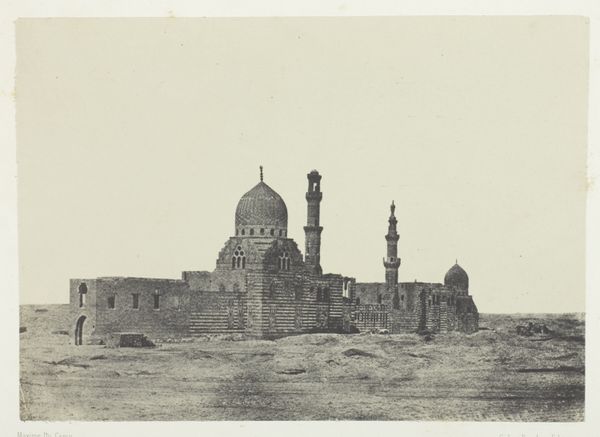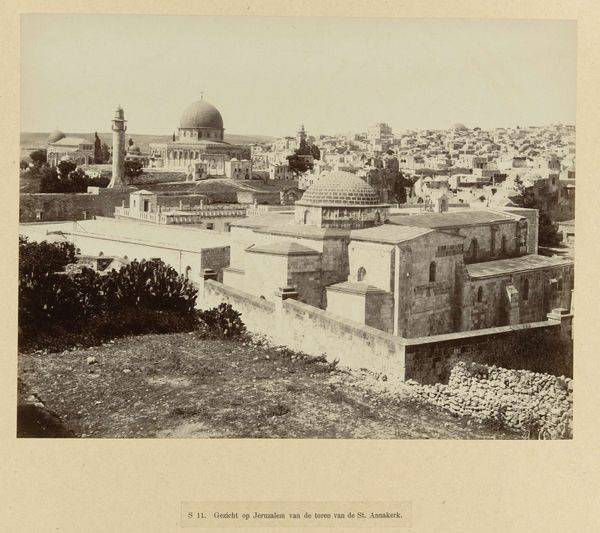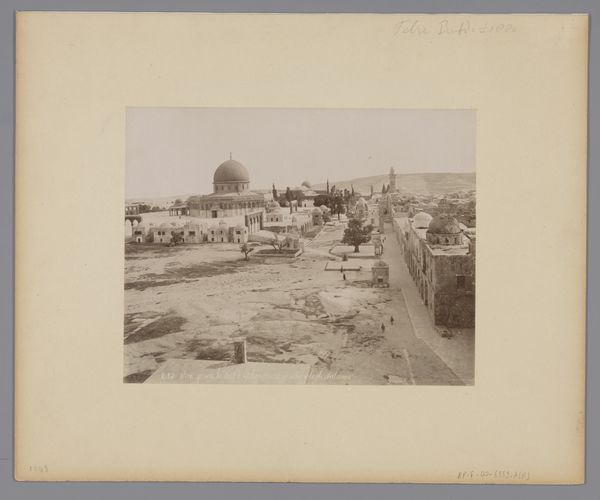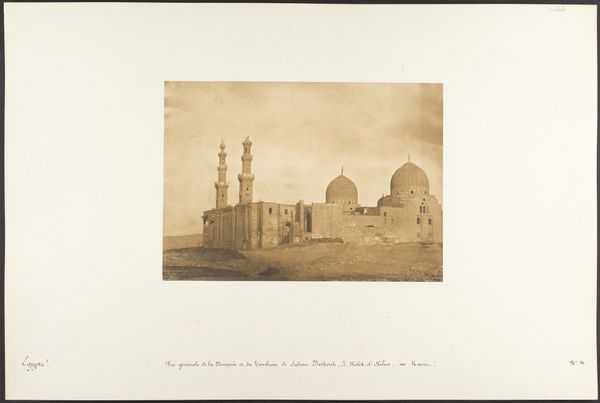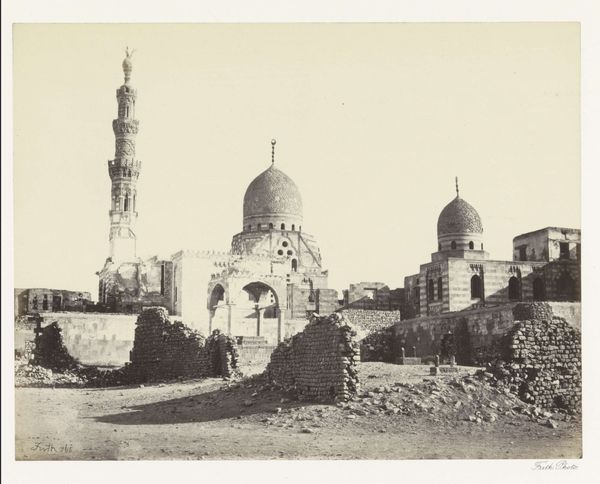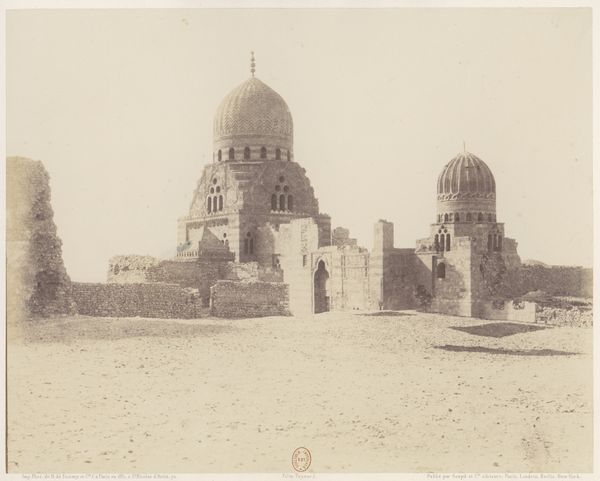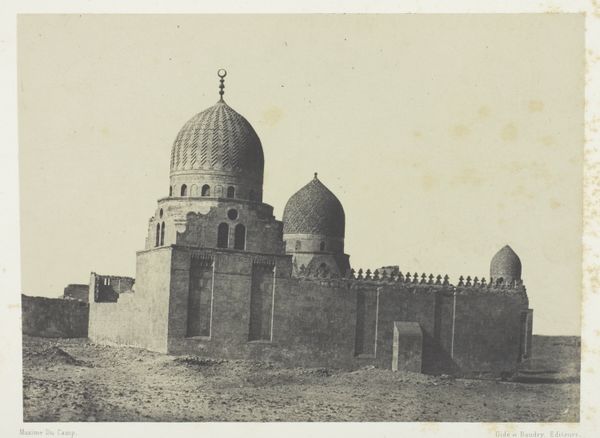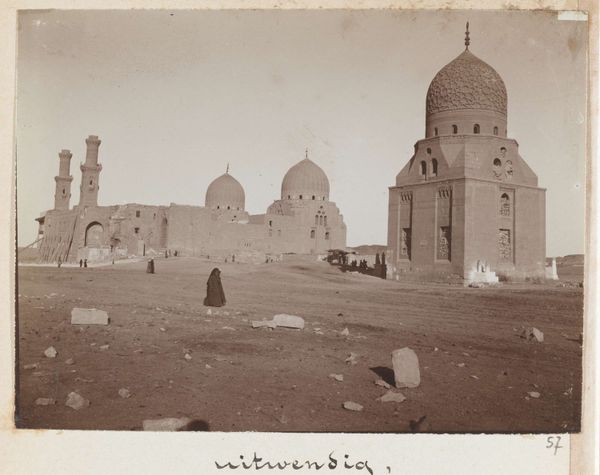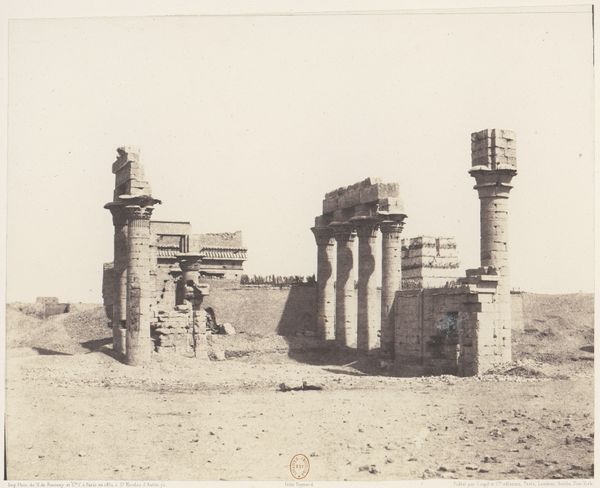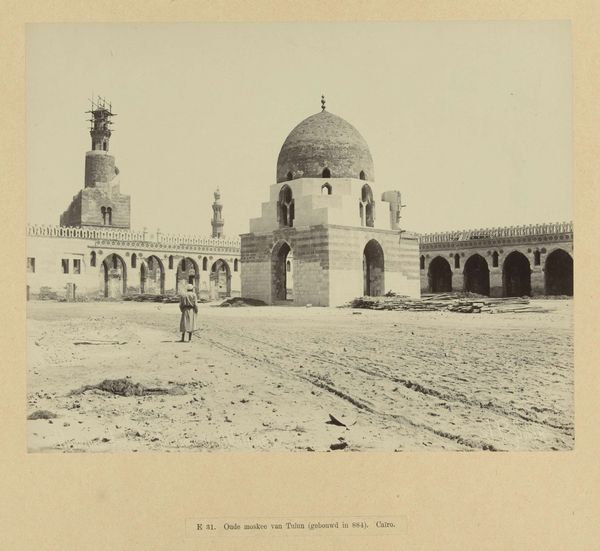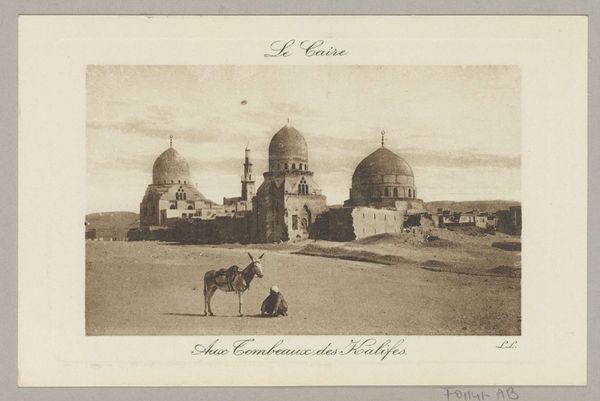
photography, gelatin-silver-print
#
landscape
#
photography
#
historical photography
#
gelatin-silver-print
#
cityscape
#
islamic-art
Dimensions: height 208 mm, width 268 mm, height 469 mm, width 558 mm
Copyright: Rijks Museum: Open Domain
Editor: This gelatin silver print, "Gezicht op de tombes van de Mammelukken, nabij Caïro," taken by Jean Pascal Sébah between 1888 and 1895, presents a vista of domed structures in what appears to be a desert landscape. There’s a kind of quiet dignity to it, but also a feeling of isolation. What strikes you most about it? Curator: The domes against the stark, pale sky are fascinating. They represent a kind of visual language that has been spoken across cultures and centuries. Think of the dome as a symbol: it connects earthly structures with the heavens, evoking both power and spiritual reflection. What stories do you imagine are held within those domed spaces? Editor: I suppose stories of rulers and faith. But also, just lives lived under that architecture. The domes, they remind me of power and permanence in a way. How has the symbolism of domes changed over time and across cultures? Curator: Exactly. Their cultural memory spans from ancient Roman architecture, Byzantine churches, and, of course, Islamic mosques. They represent continuity. The semiotics involve a conversation about power – think of the dome of the Pantheon versus the dome of the Hagia Sophia, versus these tombs of the Mamluks. Each culture imprints its values on this same form. How does that resonate with you in the context of this image? Editor: It's like seeing echoes of other times and places all at once. It makes the image feel richer, and more layered. Curator: Indeed. And that’s precisely what art, through enduring symbols, allows us to do: collapse time and space and reflect on our shared human experiences. Editor: That really does change the way I see the photograph, thank you!
Comments
No comments
Be the first to comment and join the conversation on the ultimate creative platform.

